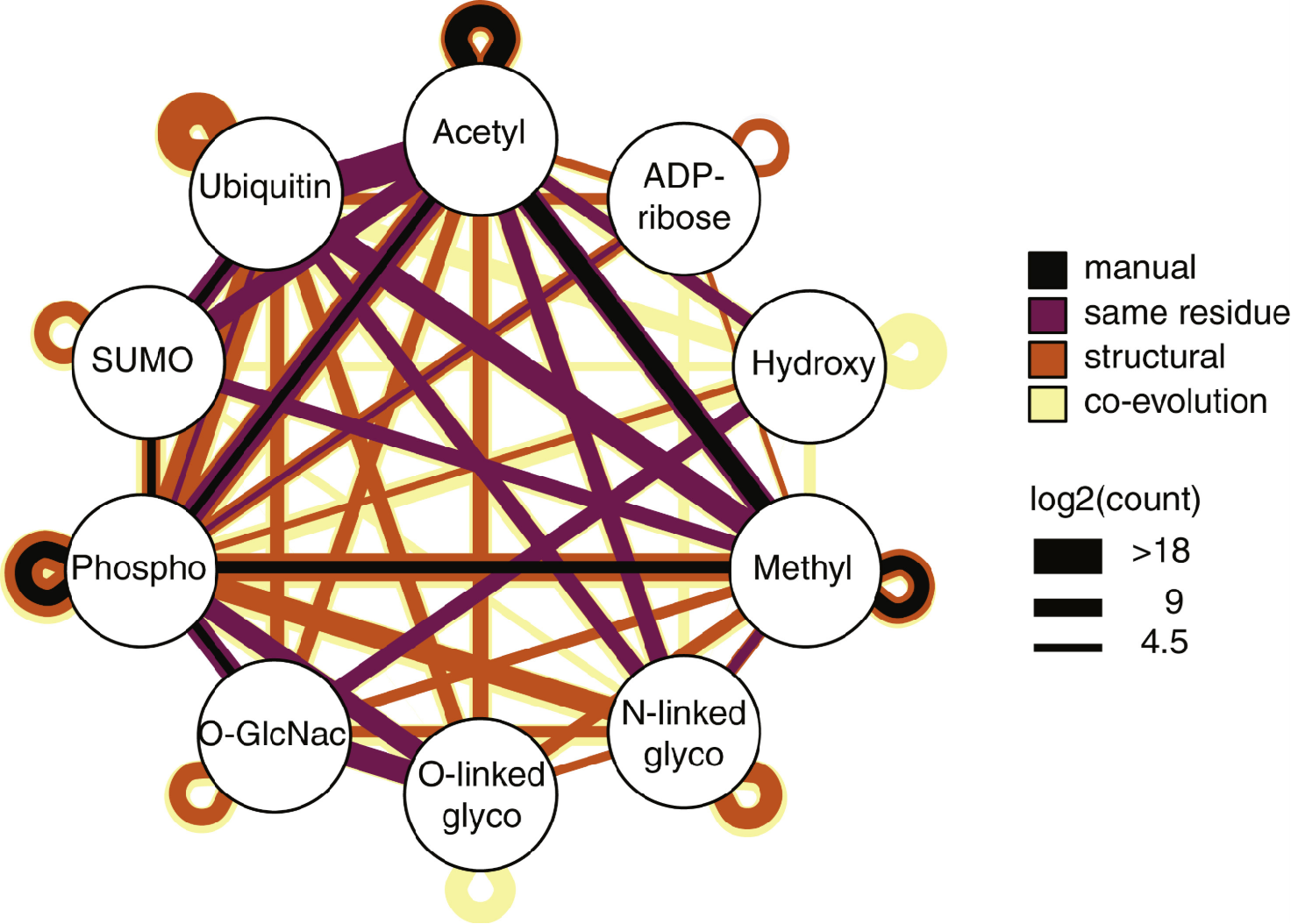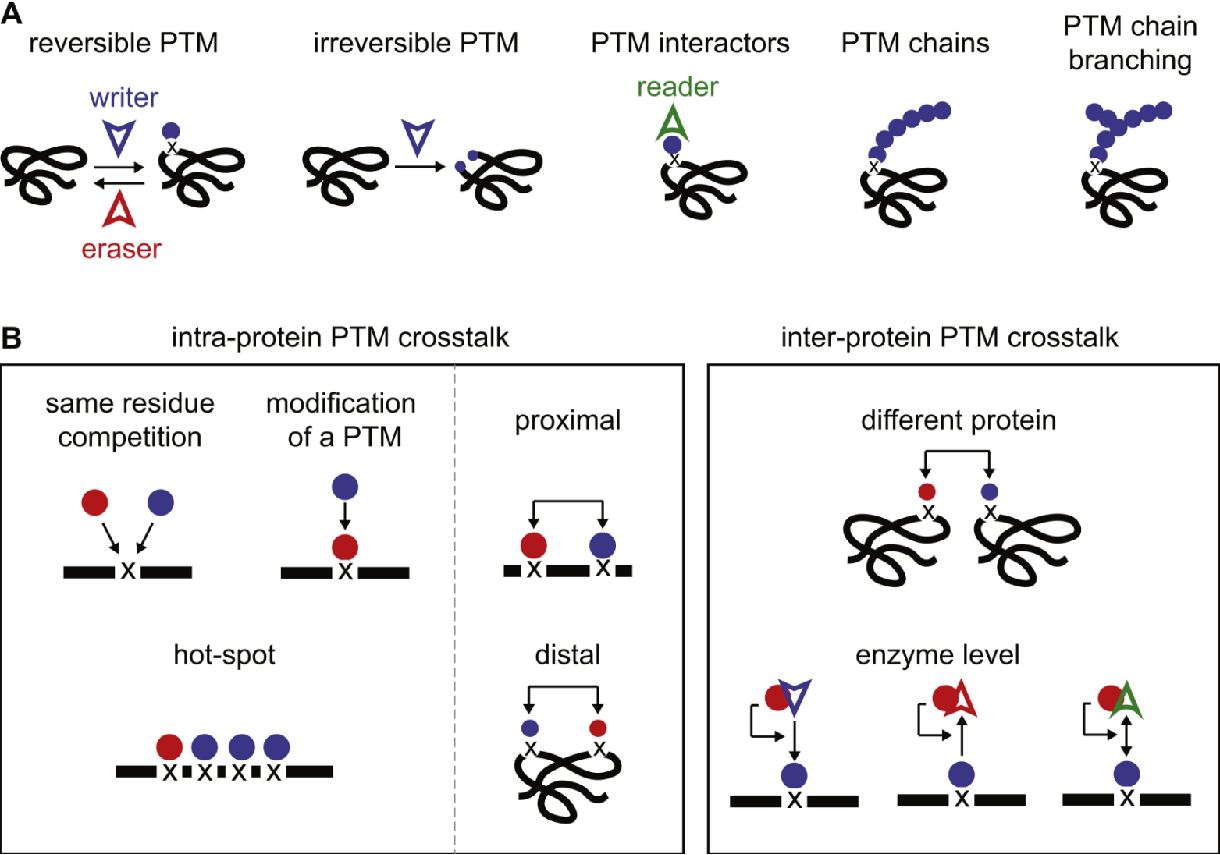Post-Translational Modification Crosstalk Prediction Service
Understanding how cells regulate protein activity is fundamental to uncovering the mechanisms of life, disease, and therapy response. Among the many regulatory layers, post-translational modifications (PTMs) play a central role by modulating protein stability, localization, interaction, and function. However, in real cellular contexts, PTMs rarely act alone. Increasing evidence shows that multiple PTMs co-exist, interact, or compete on the same protein or different proteins, forming a tightly regulated and dynamic network of PTM crosstalk. To support researchers in decoding this complex layer of regulation, MtoZ Biolabs offers a specialized Post-Translational Modification Crosstalk Prediction Service which leverages advanced proteomics data processing, machine learning-based prediction models, and curated PTM databases. We help clients uncover biologically meaningful PTM crosstalk patterns that would otherwise remain hidden in conventional single-PTM analyses.

Figure 1. Predicted PTM Crosstalk
What Is PTM Crosstalk?
Post-translational modifications (PTMs) dramatically increase the functional versatility of proteins, enabling dynamic regulation of cellular processes. A single protein can harbor multiple modification sites and be subject to diverse PTM types. The coordinated or antagonistic interplay between these modifications, either on the same protein or across multiple proteins, is referred to as PTM crosstalk. PTM crosstalk is often facilitated by spatial proximity within linear amino acid sequences or by 3D structural closeness, and may also arise from PTM-induced conformational shifts that modulate accessibility to other sites.
Key Characteristics of PTM Crosstalk
1. Crosstalk can be positive (enhancing addition or stability of other PTMs) or negative (hindering or competing with other modifications).
2. Crosstalk may occur through direct competition, sequential modification, or long-range structural indirect effects.
3. It can follow linear pathways or exhibit nonlinear, network-like behavior.
4. PTM crosstalk occurs both within a single protein (intra-protein) and between different proteins within complexes or pathways (inter-protein).

Figure 2. PTM Crosstalk Mechanism Overview
Service at MtoZ Biolabs
MtoZ Biolabs' Post-Translational Modification Crosstalk Prediction Service is designed to help researchers uncover how coordinated or antagonistic PTM interactions contribute to specific biological processes, disease mechanisms, or pathway dynamics. Our approach integrates large-scale data from public databases, literature mining, experimental proteomics, and protein–protein interaction networks. We perform in-depth bioinformatics analysis tailored to target proteins, modification types, and research objectives. Whether you are interested in single-protein mapping or network-level inference, our team can support predictive and functional interpretation of PTM interplay.
Our service includes:
💠Prediction of positive and negative PTM crosstalk patterns
💠Assessment of intra- and inter-protein crosstalk relationships
💠Identification of crosstalk hotspots, where multiple PTMs compete or converge
💠Functional enrichment analysis to associate individual PTMs and crosstalk events with biological pathways
With customizable workflows and expert consultation, MtoZ Biolabs delivers biologically relevant and publication-ready insights to support hypothesis generation, experimental design, and translational research. If you are interested in our Post-Translational Modification Crosstalk Prediction Service, please feel free to contact us.
Service Advantages
☑️Comprehensive Crosstalk Modeling: Supports both intra- and inter-protein PTM crosstalk prediction across multiple modification types, including phosphorylation, ubiquitination, acetylation, and methylation.
☑️Customizable Workflow: Tailored analysis pipelines based on specific proteins, pathways, PTM types, or experimental contexts.
☑️Integration of Multi-Source Data: Combines user data with curated databases, structural information, and PPI networks to maximize prediction accuracy.
☑️Advanced Predictive Algorithms: Incorporates rule-based logic and machine learning models trained on validated PTM interaction datasets.
☑️Expert Support Team: Our experienced bioinformatics and proteomics specialists offer dedicated guidance from project design to final interpretation.
Deliverables
1. Predicted PTM Crosstalk Events
Lists of intra- and inter-protein crosstalk pairs with classification and confidence scores.
2. PTM Crosstalk Hotspot Identification
Identification of PTM-rich regions with overlapping or competitive modifications.
3. Functional Annotation and Enrichment
GO and pathway enrichment for proteins involved in predicted crosstalk.
4. Data Visualization Outputs
Network diagrams of PTM interactions, co-modification heatmaps, Enrichment plots, statistical summary figures, and more.
5. Technical Report
Full documentation of the analysis workflow, tools used, parameters, and interpretation of key results.
Related Services
PTM Sites Identification Service
Glycoprotein Interaction Analysis Service
How to order?







